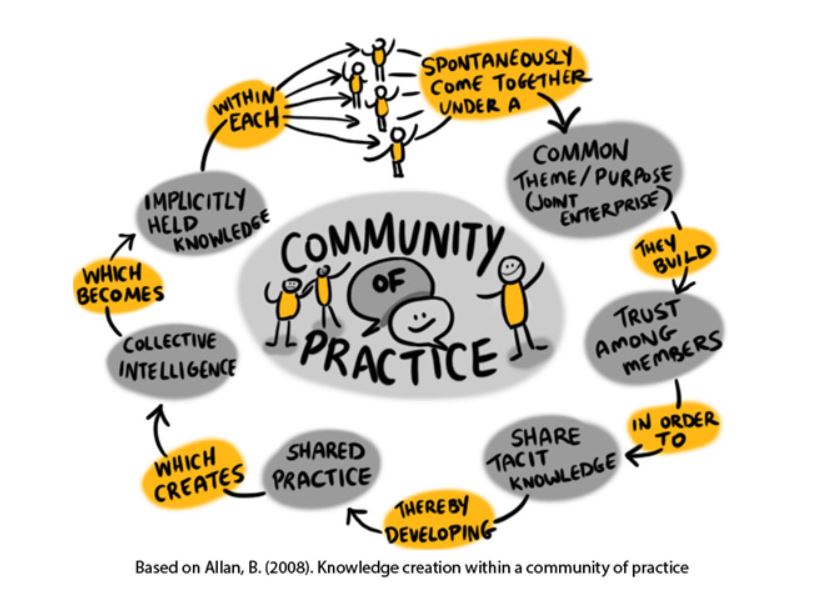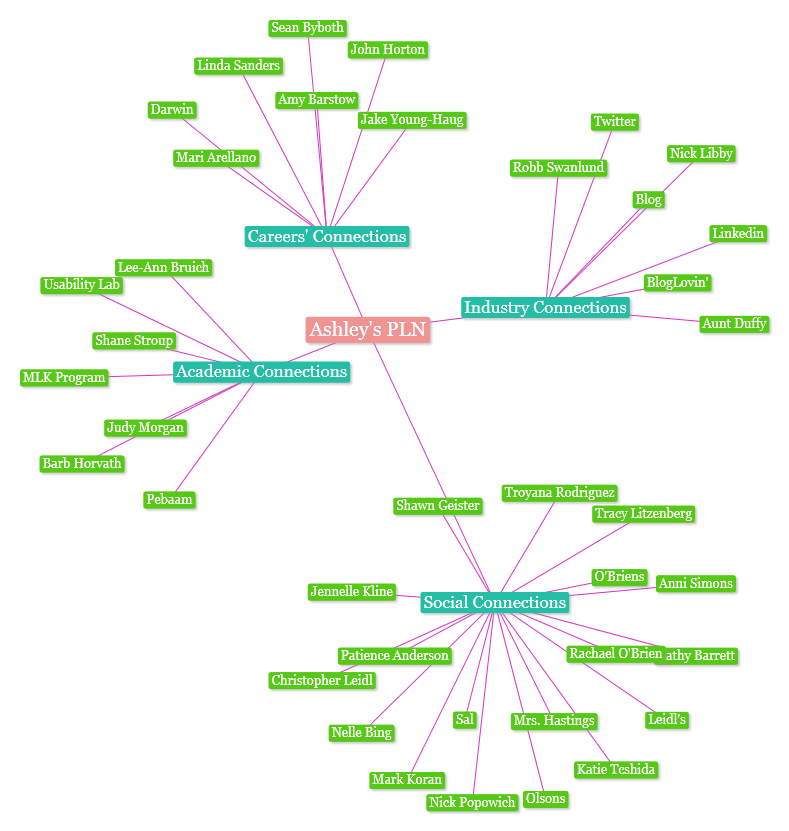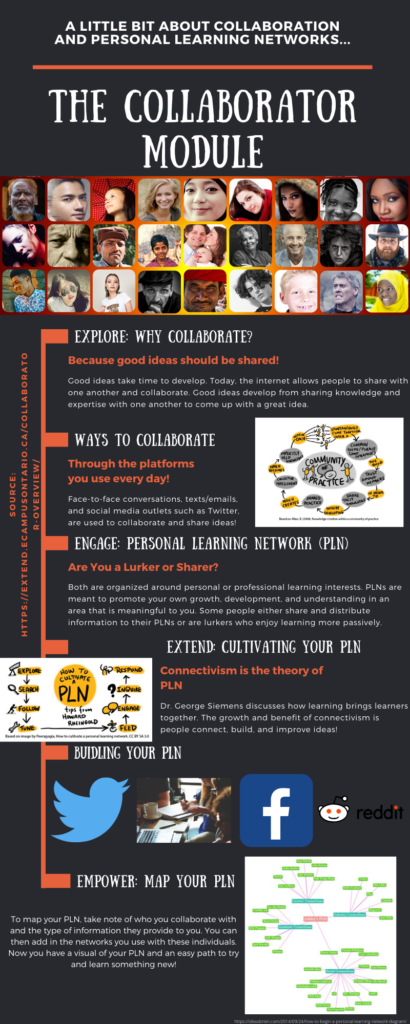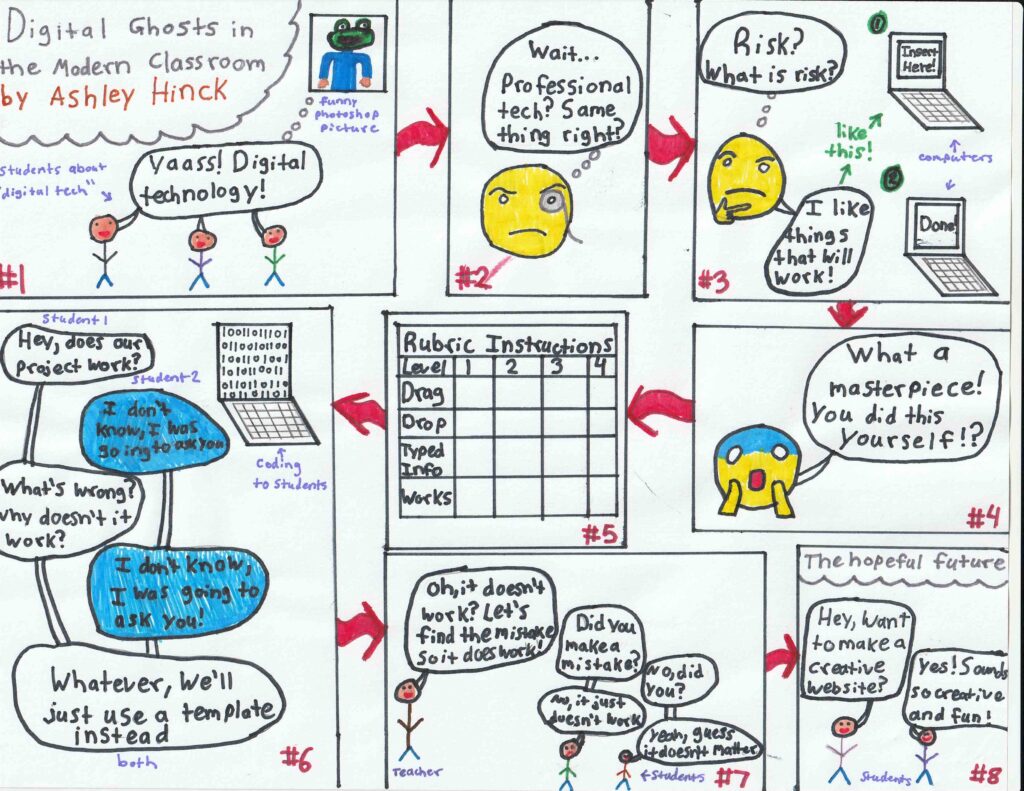For my Reflection, I decided to design an infographic to summarize the collaborator module we were tasked with exploring! This is only one of the modules presented by Extend Ontario ELearning where you can check out the other modules surrounding elearning! Keep scrolling if you want to read more about the collaborator module and a reflection that goes along with my infographic.
I decided to organize my infographic in this way because I believed it would be easy to follow and summarize the key points of the module so others can get the main idea without browsing through the entire module themselves. Here, I add some photos from both the module itself and an extra picture to try and visually represent what a completed Personal or Professional Learning Network (PLN) map would look like. Let’s dive a little deeper into it!

The first photo I added is about community practice from the Explore: Why Collaborate module. It shows the way that a learning community or PLN comes to develop. People with similar learning interests share with each other to create a thread of information for others to either follow or participate in. I decided to place this diagram into my infographic as it can help readers see the development of a community with the same interests, both professionally and/or personally!

The second picture from the collaborator module comes from the Extend: Cultivate a PLN section. It shows that there is a process to follow when cultivating your own PLN. You can explore what is already out there concerning your learning interest and then how to start participating in different PLNs! I thought it would be good to add this picture since it would be simple to follow and hopefully one could understand what goes into the making of a PLN.

The final picture I added was from an outside source that is a blog about A Technical Writer’s Guide to the Galaxy by Ashley Idea O’Brien. I thought their picture perfectly represented the type of idea they were going for in the Empower: Map Your PLN section. It includes an activity where they ask you to create your own personal map of your PLN so you could have a visual representation of where and who you get information from!
Feel free to leave a comment and let me know if you have any questions or constructive feedback!


